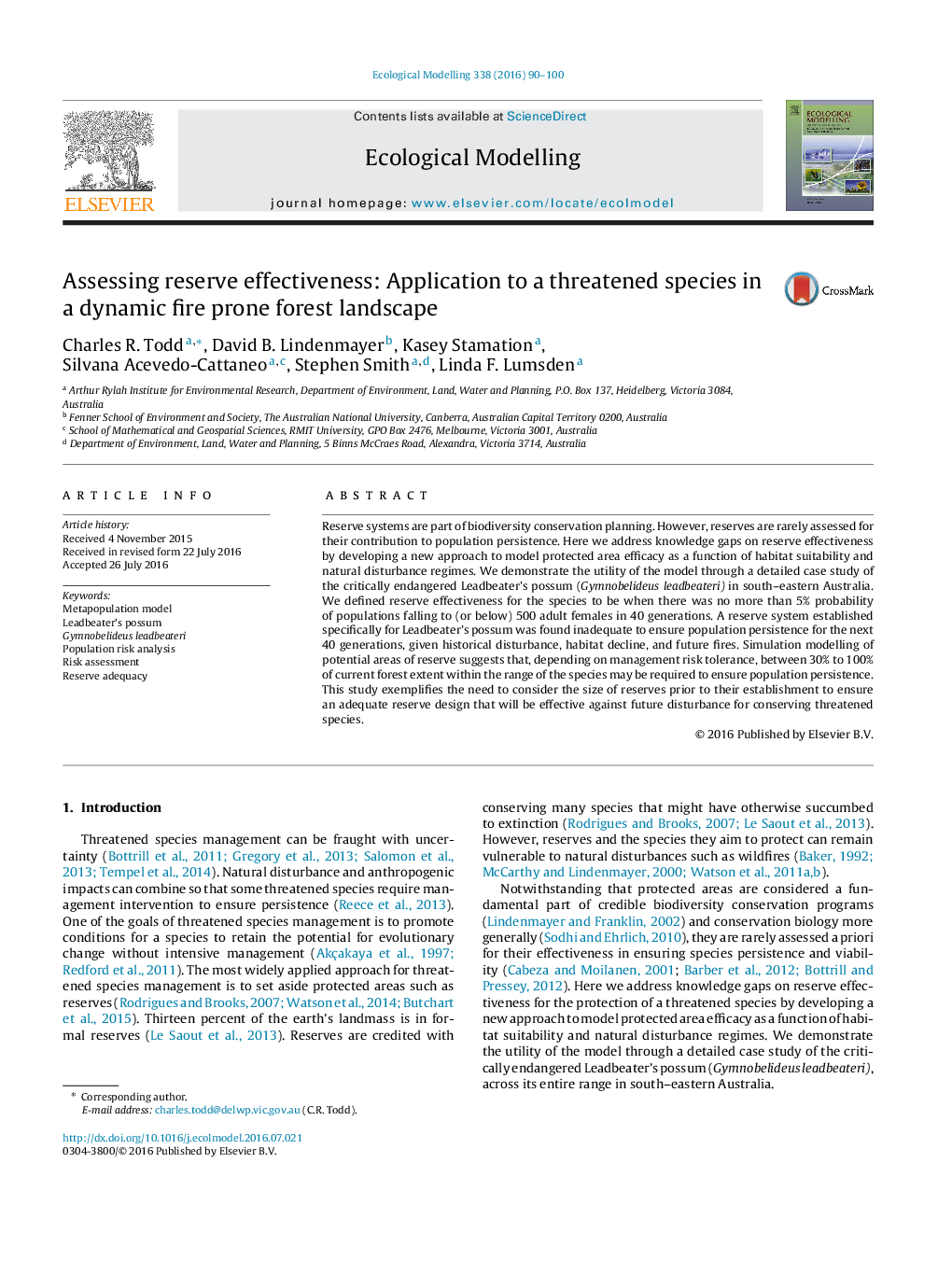| Article ID | Journal | Published Year | Pages | File Type |
|---|---|---|---|---|
| 6296004 | Ecological Modelling | 2016 | 11 Pages |
Abstract
Reserve systems are part of biodiversity conservation planning. However, reserves are rarely assessed for their contribution to population persistence. Here we address knowledge gaps on reserve effectiveness by developing a new approach to model protected area efficacy as a function of habitat suitability and natural disturbance regimes. We demonstrate the utility of the model through a detailed case study of the critically endangered Leadbeaterâ¿¿s possum (Gymnobelideus leadbeateri) in southâ¿¿eastern Australia. We defined reserve effectiveness for the species to be when there was no more than 5% probability of populations falling to (or below) 500 adult females in 40 generations. A reserve system established specifically for Leadbeaterâ¿¿s possum was found inadequate to ensure population persistence for the next 40 generations, given historical disturbance, habitat decline, and future fires. Simulation modelling of potential areas of reserve suggests that, depending on management risk tolerance, between 30% to 100% of current forest extent within the range of the species may be required to ensure population persistence. This study exemplifies the need to consider the size of reserves prior to their establishment to ensure an adequate reserve design that will be effective against future disturbance for conserving threatened species.
Keywords
Related Topics
Life Sciences
Agricultural and Biological Sciences
Ecology, Evolution, Behavior and Systematics
Authors
Charles R. Todd, David B. Lindenmayer, Kasey Stamation, Silvana Acevedo-Cattaneo, Stephen Smith, Linda F. Lumsden,
